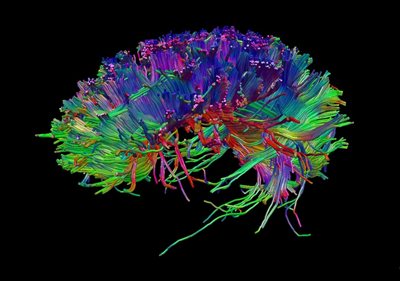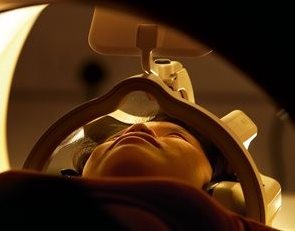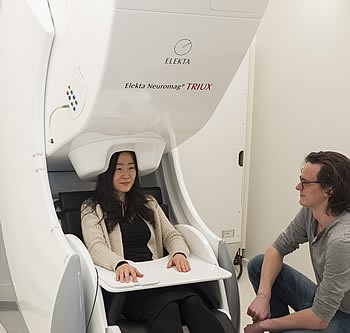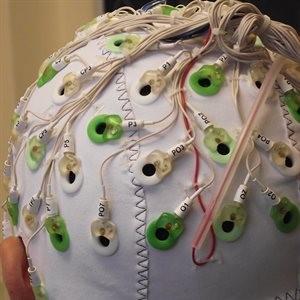The Centre for Human Brain Health (CHBH) is a collaboration between the College of Life and Environmental Sciences, and the College of Medical and Dental Sciences.
It is an interdisciplinary brain research facility established with the mission of understanding what makes a brain healthy, how to maintain it, and how to prevent and reverse damage. The CHBH is at the forefront of understanding how the brain binds together separate processes and allocates resources through the coordination of large-scale oscillatory activity, and in using these mechanisms to understand cognitive function.

The CHBH has a strong focus on combining different techniques to provide a more complete picture of human brain function -- while several excellent techniques for studying the human brain exist, each has limitations and we are always constrained by the need for methods to be non-invasive.
Maintaining a healthy brain means understanding how individual lifestyles impact on the brain, and we are investigating the role of sleep, diet and exercise in particular in keeping the brain healthy across the lifespan from childhood to late adulthood. With access to a large and diverse local population, we are excellently placed to take these fundamental insights into the human brain and use them to provide a better understanding of neurological and psychiatric disorders, including psychosis, ADHD, stroke and epilepsy.
Find out more at the Centre for Human Brain Health website
 The suite of equipment available at the CHBH includes a new £1.75 million Siemens Prisma 3T MRI scanner, a state-of-the-art MEG scanner, plus EEG and fNIRS capabilities. Researchers associated with the Centre are experts in their field, and include researchers from the School of Psychology, School of Sport and Exercise Science, School of Computer Science and College of Medical and Dental Sciences.
The suite of equipment available at the CHBH includes a new £1.75 million Siemens Prisma 3T MRI scanner, a state-of-the-art MEG scanner, plus EEG and fNIRS capabilities. Researchers associated with the Centre are experts in their field, and include researchers from the School of Psychology, School of Sport and Exercise Science, School of Computer Science and College of Medical and Dental Sciences.
The Centre is also working closely with NHS clinicians, in particular from the Barberry National Centre for Mental Health, Queen Elizabeth Hospital, and Birmingham Children's Hospital.
The Centre for Human Brain Health (CHBH) at the University of Birmingham is available to the following groups:
- Current staff and students
- Prospective staff and students
- Academics both internal and external
- Industry professionals
For more information regarding how to get in touch with the CHBH, please use the contact details at the bottom of this webpage.
Magnetic Resonance Imaging

The CHBH magnetic resonance imaging (MRI) laboratory houses a Siemens Prisma 3T MRI scanner and an MRI simulator (mock scanner), with both systems providing a range of options for stimulus delivery and physiological and behavioural recordings.
The available equipment includes:
- Barco Projector (potentially up to 120Hz refresh rate)
- MR-compatible button boxes (NATA Response Boxes; 2x5 and 2x2)
- audio capture and transmission system
- eye tracking (SR Research Eyelink Eye tracker)
- limb movement tracking (3 Camera Qualisys Motion Tracker System)
- facilities to support multimodal data acquisition, including MR-compatible 64 channel EEG and transcranial direct current stimulation (tDCS) systems.
Magnetoencephalography

The magnetoencephalography (MEG) laboratory houses a Neuromag TRUIX system. MEG allows for continuous recordings of ongoing brain activity with a millisecond time resolution. By using advanced analysis tools it is furthermore possible to identify where in the brain the measured electrophysiology activity is generated.
The TRIX system has 306 sensors distributed over the head: 204 planar gradiometers and 102 magnetometers. The MEG system is place in a two-layer shielded room. The system allows for concurrent EEG recordings from 64 electrodes and continuous monitoring of the head position. A closed-loop He recycler eliminates refills.
The peripherals of the MEG system includes a:
- ProPixx projector (1440 refresh rate)
- a fast eye-tracker from EyeLink/SR Research
- auditory stimulation
- somatosensory stimulation
- button boxes
- A dedicated MEG analysis pipeline, FLUX, is under development to facilitate research.
The Functional Near Infrared (fNIRS) Laboratory
The functional near infrared (fNIRS) laboratory houses the Imagent (v2) system. The Imagent system is based on the measurement of the propagation of near infrared light through tissue, allowing for non-invasive functional imaging of the brain. The Imagent system is a time resolved fNIRS system that measures the light intensity, the modulation of the light and the time taken by the light signal to traverse the illuminated area of the brain (or other targeted tissue).
The system can be combined with EEG, TMS and MRI operations, as well as used in conjunction with typical stimulus-response tools to assess brain health (e.g. button boxes, cerebrovascular reactivity protocols). This imaging technology together with model-based image reconstruction techniques (e.g. NIRFAST) provide a balance between temporal and spatial resolution for the study of superficially located areas of the human brain (typically up to 30 mm deep from the scalp). This imaging approach is able to detect variations in the blood oxygenation levels of activated brain areas and provide spatial maps of where these haemodynamic changes occur, thus combining the fast neurological signals (the event related optical signal) and the slow signals (haemodynamic changes) of the brain. The Imagent system features 64 emitters and 30 detectors, which provides 960 optical channels and has the capability of simultaneous whole-head imaging.
The Sleep Laboratories
The CHBH sleep laboratory houses two separate sleep rooms and a central control unit. Both rooms are equipped with BrainAmp© DC 64-channel EEG amplifiers. Customised sleep EEG caps ensure participant comfort and ease in experimental setup. Peripheral equipment for experimental testing and stimulus delivery (e.g. auditory cues) is provided. In addition, the suite offers dedicated transcranial electrical stimulation (tES) devices (neuroConn© DC-Stimulator Plus, CED Micro1401-3 data acquisition unit).
EEG Lab

The CHBH houses a state-of-the-art Biosemi 128 channel EEG system with active electrodes. A high performance computer allows for accurate timing and application of auditory and visual stimulation (concurrently or separately). Electrode locations can be tracked with a Polhemus Fastrack and co-registered with individual MRIs for accurate source models.
Eye-movements can be recorded and synchronized with the EEG system with a fast Eye-tracker from EyeLink/SR research. Analysis pipelines for analysing time-frequency and time-locked data in the sensor space and source space have been developed and are available from leading researchers in the CHBH.
Researchers associated with the Centre are experts in their field, and include researchers from the School of Psychology, School of Sport and Exercise Science, School of Computer Science and College of Medical and Dental Sciences. The Centre is also working closely with NHS clinicians, in particular from the Barberry National Centre for Mental Health, Queen Elizabeth Hospital, and Birmingham Children's Hospital. Support comes from a variety of prestigious funding bodies including the Wellcome Trust, European Research Council and RCUK.
Since 2016, PIs associated with the Centre have published over 200 papers (the full list is available here), including Nature, Nature Neuroscience, Current Biology and PLOS Biology.
All general enquiries should be directed to Caroline Ratcliffe.
Telephone: 0121 414 6261
Email: chbh@contacts.bham.ac.uk